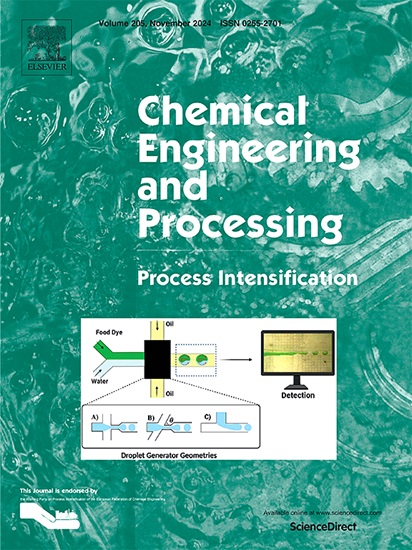State-of-the-art in forward osmosis membrane process: materials, fabrication, and applications
IF 3.8
3区 工程技术
Q3 ENERGY & FUELS
Chemical Engineering and Processing - Process Intensification
Pub Date : 2025-05-29
DOI:10.1016/j.cep.2025.110385
引用次数: 0
Abstract
Forward osmosis (FO) is a promising, low-energy membrane process as compared to pressure-driven technologies like reverse osmosis. This review critically discusses the progress in FO membrane technology, taking the advances in materials, preparation methods, and real-world applications into consideration. Recent progress in nanoparticle-doped micro- or nanoporous membranes, bioinspired nanostructured membranes and stimuli-responsive polymers may boost the water permeation, selectivity and anti-fouling capacity. Electrospinning and layer-by-layer assembly, as novel fabrication strategies provide better control of membrane architecture and performance. One more approach can also be found in introducing materials including, but not limited to, graphene oxide, carbon nanotubes and metal-organic frameworks into FO membranes to enhance water flux, salt rejection and membrane mechanical stability. In particular, optimized membranes have achieved water flux up to 83.55 % higher and reverse salt flux up to 75.58 % lower than their simulated counterparts, highlighting their enhanced performance. Moreover, inherent challenges including internal concentration polarization, scalability and membrane long-term stability are outlined, as well as potential strategies for circumventing these drawbacks. They are also discussed for potential applications in industrial desalination, wastewater treatment, food processing, and resource recovery, and their importance in achieving sustainability in the utilization of water.

正向渗透膜工艺的最新进展:材料、制造和应用
与反渗透等压力驱动技术相比,正向渗透(FO)是一种很有前途的低能耗膜工艺。本文从材料、制备方法和实际应用等方面综述了FO膜技术的研究进展。纳米颗粒掺杂微孔或纳米孔膜、仿生纳米结构膜和刺激响应聚合物的最新研究进展可能会提高水渗透、选择性和抗污染能力。静电纺丝和逐层组装是一种新型的制备方法,可以更好地控制膜的结构和性能。还有一种方法是在FO膜中引入材料,包括但不限于氧化石墨烯、碳纳米管和金属有机框架,以增强水通量、防盐性和膜的机械稳定性。与模拟膜相比,优化膜的水通量提高了83.55%,反盐通量降低了75.58%,其性能得到了显著提高。此外,还概述了内部浓度极化、可扩展性和膜的长期稳定性等固有挑战,以及规避这些缺点的潜在策略。还讨论了它们在工业脱盐、废水处理、食品加工和资源回收方面的潜在应用,以及它们在实现水的可持续性利用方面的重要性。
本文章由计算机程序翻译,如有差异,请以英文原文为准。
求助全文
约1分钟内获得全文
求助全文
来源期刊
CiteScore
7.80
自引率
9.30%
发文量
408
审稿时长
49 days
期刊介绍:
Chemical Engineering and Processing: Process Intensification is intended for practicing researchers in industry and academia, working in the field of Process Engineering and related to the subject of Process Intensification.Articles published in the Journal demonstrate how novel discoveries, developments and theories in the field of Process Engineering and in particular Process Intensification may be used for analysis and design of innovative equipment and processing methods with substantially improved sustainability, efficiency and environmental performance.

 求助内容:
求助内容: 应助结果提醒方式:
应助结果提醒方式:


